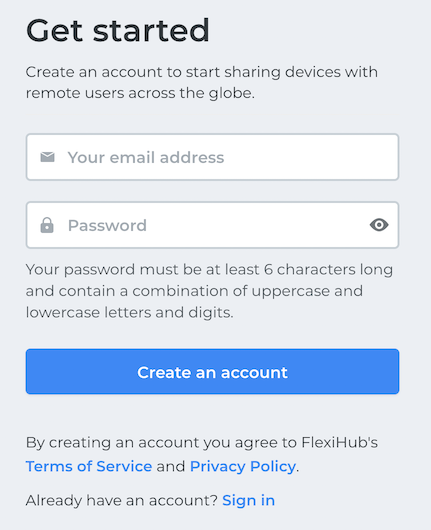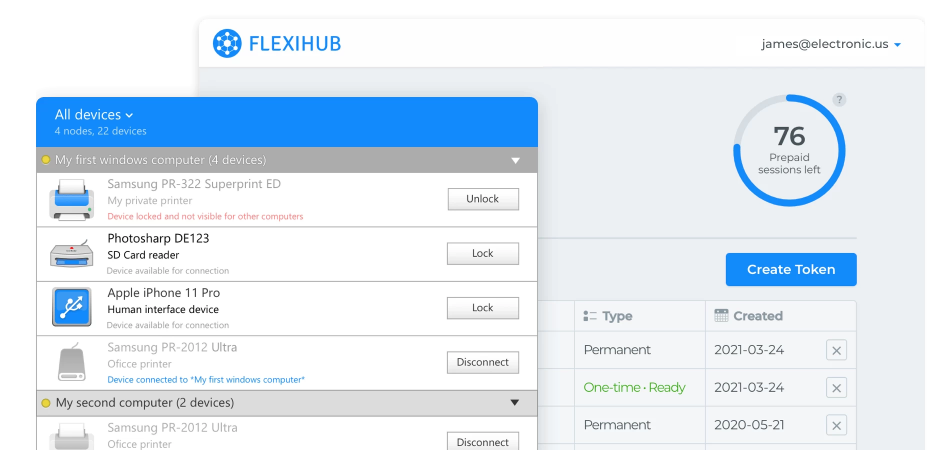FlexiHub Team uses cookies to personalize your experience on our website. By continuing to use this site, you agree to our cookie policy. Click here to learn more.
One of the challenges faced when connecting to computers over the RDP protocol is when it is needed to use local USB devices on a remote desktop. If you are running an application on a remote server over RDP, connecting some USB devices to the remote desktop can pose various difficulties.

This article will describe an effective software method that makes enabling remote desktop USB redirection relatively easy. Read on to learn the detailed steps for connecting USB to the remote desktop, and find out what challenges may arise when using USB over RDP.
FlexiHub is a software solution to a common RDP problem - the lack of support for USB devices. Sometimes, the remote machine needs to have access to locally-connected USB hardware, such as specialized mice, cameras, biometric scanners, and USB storage. This is where the application comes in.
When using the app to create a USB remote desktop connection, devices can be used on the remote machines with the same level of functionality as if they had a direct physical connection.
FlexiHub fully supports native RDP, using the protocol to pass the USB devices connected to a user’s computer to the RDP session host. USB passthrough is provided with per-session isolation, meaning that the shared devices can be restricted from other users connected to the same host machine.
FlexiHub works by sharing the USB ports of the local computer with remote desktop instances. This makes it possible to access USB devices in remote desktop sessions as soon as they are plugged into the local machine.
FlexiHub offers users a user-friendly and efficient method of setting up USB redirection in remote desktop environments.




You can use native operating system capabilities to redirect USB devices over RDP but you may run into difficulties. Certain devices work better than others because of certain issues such as bandwidth and network latency.
An example can be seen with USB devices that need consistently high throughput. Latency may impact their functionality in a VDI session. Another problem can come up with USB 3.0 devices attempting to use a USB 2.0 port on the client.
When sharing USB devices over RDP, an IT team needs to keep in mind the performance requirements of the peripheral equipment.
When working over LAN, if you want to create a Remote Desktop connection you’ll need to configure the computer that will be accessed remotely to accept the incoming connections first.
The following steps show how to use Microsoft Remote Desktop and set it up via Windows Control Panel.
Here is what you’ll need to do to allow the remote desktop connections to a selected machine:



Once you have completed these steps, the target computer will be configured to accept Remote Desktop connections. You will need to manually configure firewall rules if you are using a third-party solution. If you are using the default Microsoft Defender firewall, the system will automatically add the rules required to enable Remote Desktop sessions.
After configuring the selected computer to allow remote connections, your local machine can access it with a Remote Desktop connection.



 Buttons located on the right side of the bar let you end the session, modify the window size, or minimize the connection window to the taskbar. You can also pin the bar or check its connection speed with buttons on the left side of the bar.
Buttons located on the right side of the bar let you end the session, modify the window size, or minimize the connection window to the taskbar. You can also pin the bar or check its connection speed with buttons on the left side of the bar.
